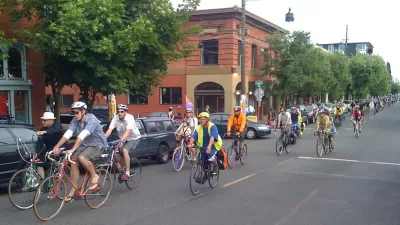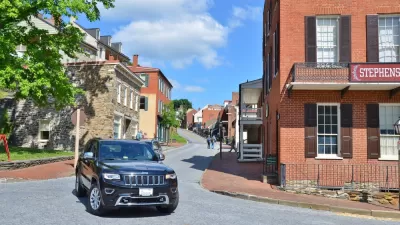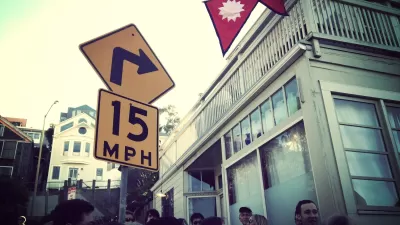The findings of a recent memo highlight the disproportionate effects of unsafe road conditions on low-income people and BIPOC communities.

Oregon's Department of Transportation has released a technical memo that outlines the effects of race and income on road safety and "draws a line between injury and fatality rates of non-drivers and the racial, income and geographic makeup of crash victims," reports Jonathan Maus for Bike Portland.
The findings in "Pedestrian Injury and Social Equity" show that "places with a higher concentration of people of color and poverty are much more likely to suffer injury or death while walking." While just nearly a quarter of Oregon's population lives in a Census tract with a high percentage of low-income and BIPOC residents, about 40% of non-driver injuries take place in these areas, which are often characterized by a "'harsh' transportation environment" and unsafe conditions. Without a comprehensive statewide database for pedestrian safety infrastructure, the study was unable to analyze how the presence or absence of such infrastructure impacts injury rates, signaling a need for more comprehensive data collection as a first step toward understanding the state's transportation equity landscape.
The findings are nothing new to bike and pedestrian advocates who study the issue, but "now that ODOT’s own data aligns with existing research, this information should be used to inform investment decisions" and prioritize needs such as a statewide infrastructure database.
FULL STORY: Oregon DOT shares first-ever internal research on how race and income impact road safety

Alabama: Trump Terminates Settlements for Black Communities Harmed By Raw Sewage
Trump deemed the landmark civil rights agreement “illegal DEI and environmental justice policy.”

Planetizen Federal Action Tracker
A weekly monitor of how Trump’s orders and actions are impacting planners and planning in America.

Why Should We Subsidize Public Transportation?
Many public transit agencies face financial stress due to rising costs, declining fare revenue, and declining subsidies. Transit advocates must provide a strong business case for increasing public transit funding.

Understanding Road Diets
An explainer from Momentum highlights the advantages of reducing vehicle lanes in favor of more bike, transit, and pedestrian infrastructure.

New California Law Regulates Warehouse Pollution
A new law tightens building and emissions regulations for large distribution warehouses to mitigate air pollution and traffic in surrounding communities.

Phoenix Announces Opening Date for Light Rail Extension
The South Central extension will connect South Phoenix to downtown and other major hubs starting on June 7.
Urban Design for Planners 1: Software Tools
This six-course series explores essential urban design concepts using open source software and equips planners with the tools they need to participate fully in the urban design process.
Planning for Universal Design
Learn the tools for implementing Universal Design in planning regulations.
Caltrans
Smith Gee Studio
Institute for Housing and Urban Development Studies (IHS)
City of Grandview
Harvard GSD Executive Education
Toledo-Lucas County Plan Commissions
Salt Lake City
NYU Wagner Graduate School of Public Service





























